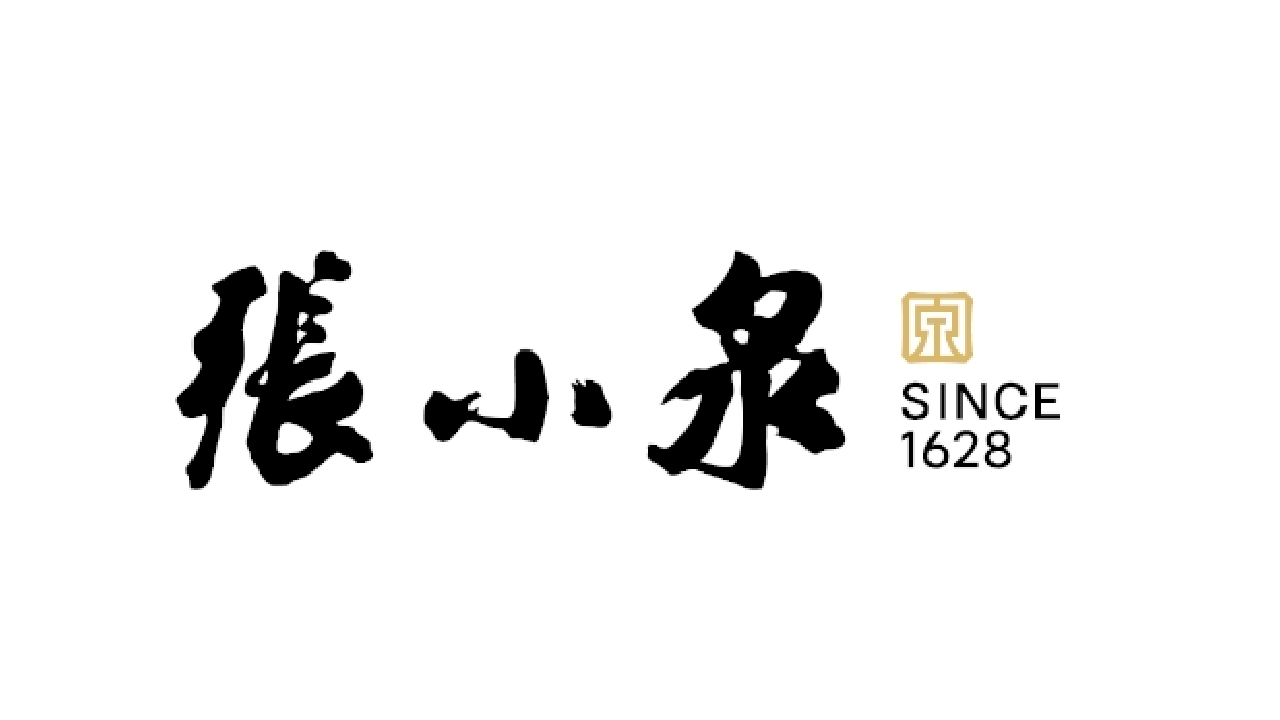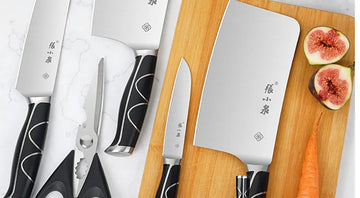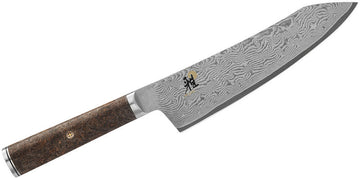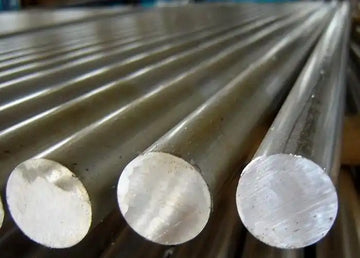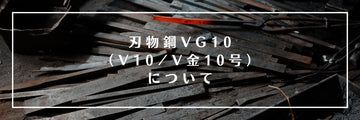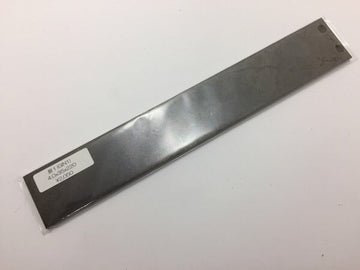In the world of kitchen knives, 5Cr15MoV steel (50Cr15MoV ) is like that reliable family sedan – not the flashiest option on the block, but dependable, easy to live with, and kind to your wallet. This Chinese stainless steel has found its way into many kitchen drawers by offering a thoughtful balance of performance, durability, and affordability. With about 0.5% carbon and 15% chromium, it resists rust admirably while being forgiving when it comes time for sharpening.
What 5Cr15MoV steel is made of
The name "5Cr15MoV" (50Cr15MoV) tells us the basic ingredients in this steel recipe:
- The "5" indicates about 0.5% carbon, enough to provide decent hardness without becoming brittle
- "Cr15" means it contains approximately 15% chromium, giving it excellent rust resistance
- "Mo" stands for molybdenum, which enhances strength and helps fight corrosion
- "V" represents vanadium, which contributes to edge retention and durability
Chinese steel makers have carefully balanced carbon, chromium, molybdenum and vanadium ingredients to create a material that handles kitchen tasks well without requiring exotic ingredients or complicated processing. It's like a well-tested family recipe rather than experimental cuisine.
How 5Cr15MoV performs in the kitchen
Edge retention and cutting ability
With moderate carbon content, 5Cr15MoV achieves a hardness of 55-58 HRC, placing it in the comfortable middle zone between too soft and too brittle. This means your knife will hold its edge through several meal preparations before needing attention. When cutting vegetables, meats, and other common ingredients, it maintains its sharpness reasonably well.

This practical edge retention makes 5Cr15MoV ideal for busy kitchens where you want to focus on cooking rather than constantly maintaining your tools. While it won't match the edge-holding ability of high-end Japanese steels, it performs admirably for its price point, keeping a functional edge through normal meal preparation.
Corrosion resistance and durability
With 15% chromium, 5Cr15MoV has excellent protection against rust and staining. This high chromium content creates a protective barrier that stands up well to acidic foods like tomatoes, citrus, and vinegar. The addition of molybdenum further enhances this resistance, especially against pitting corrosion from salt.

This strong corrosion resistance makes 5Cr15MoV particularly user-friendly in busy kitchens. It forgives the occasional neglect when a knife isn't immediately washed and dried after use. Many manufacturers even rate their 5Cr15MoV knives as dishwasher-safe (though hand washing is still recommended for best results).
The steel also offers good toughness for kitchen tasks. While not designed for chopping bones or frozen foods, it handles normal cutting, slicing, and dicing without chipping or rolling its edge. This practical durability contributes to the knife's overall value and reliability.
5Cr15MoV Applications in kitchen knives
Versatility in the kitchen
5Cr15MoV excels in general-purpose kitchen knives. Its balanced properties make it suitable for chef's knives, santokus, utility knives, and paring knives. The corrosion resistance handles acidic ingredients, while its edge retention and ease of sharpening meet the practical needs of various cutting tasks.
Many knife manufacturers use 5Cr15MoV for their mid-range product lines, offering consumers an upgrade from the most basic stainless steels without approaching the price of premium materials. This accessibility has made quality kitchen tools available to more home cooks and budget-conscious professionals.
Value proposition
Perhaps the most compelling aspect of 5Cr15MoV is its exceptional price-to-performance ratio. This steel delivers good cutting performance, excellent corrosion resistance, and reliable durability at a cost that makes quality kitchen knives accessible to more people. At $20-50 for a typical chef's knife, it represents a sweet spot between budget options and premium prices.

The affordability comes partly from efficient production in China and partly from a composition that achieves good results without requiring expensive rare elements. Manufacturers can focus on design, heat treatment, and finishing details rather than compensating for costly materials, resulting in better overall products at moderate prices.
Standout examples from Zhang Xiaoquan
Among the most respected implementations of 5Cr15MoV/50Cr15MoV steel are the Chinese kitchen knives from Zhang Xiaoquan, a renowned brand with over 390 years of history. Their expertise in heat treatment brings out the best properties of this steel in traditional Chinese knife designs.
Some outstanding Zhang Xiaoquan models featuring 5Cr15MoV(50Cr15MoV) steel include:
-
5Cr15MoV(50Cr15MoV) CVD-Coated Chinese Meat Cleaver: The specialized green CVD coating provides excellent antibacterial protection while maintaining a food-release surface, perfect for efficient food preparation.
-
5Cr15MoV(50Cr15MoV) Hammer-forged Round-Tip Meat Cleaver: features a precision 1600°C hand-crafted round-tip slicer The 50Cr15MoV steel slicer excels at precise food preparation tasks.
-
5Cr15Mov(50Cr15MoV) Hammer-forged Chopper Knife: features a dual-purpose design - the front section for precision cutting of vegetables and meats, while the thicker back portion effectively chops through bones, combining two kitchen tools in one traditional Chinese knife.
-
5Cr15MoV(50Cr15MoV) Hammer-forged Bone Chopper: features a precision 1600°C hand-crafted bone chopper with a professional honing rod. The 50Cr15MoV steel bone chopper excels at professional food preparation
-
270mm 5Cr15MoV(50Cr15MoV) Chopping Knife: forged using traditional techniques for hardness. The hammered blade surface keeps food from sticking. Rounded edge for cutting through chicken and pork bones. Black walnut handle with triple rivets for strength.
All these models demonstrate how skilled manufacturing can optimize this steel's performance in Chinese kitchen knives, delivering excellent cutting ability with the corrosion resistance needed in busy Asian kitchens.
For home cooks and professionals
5Cr15MoV is particularly well-suited for the typical home cook. Its forgiving nature means users can focus on developing their culinary skills rather than obsessing over knife maintenance. The noticeable improvement over basic knives provides immediate satisfaction, encouraging better cooking techniques and greater appreciation for quality tools.
Even in professional environments, 5Cr15MoV has found its place, particularly in busy prep kitchens where knives see heavy use. Its practical performance and low maintenance requirements make these knives convenient workhorses in commercial settings where value and durability matter.
5Cr15MoV Comparison with other kitchen knife steels
5Cr15MoV vs. X50CrMoV15
X50CrMoV15 deserves special attention as it's essentially the German/European designation for a very similar steel composition to 5Cr15MoV/50Cr15MoV. Both contain approximately 0.5% carbon and 15% chromium, with additions of molybdenum and vanadium. However, X50CrMoV15 (used by Wüsthof, Henckels, and other German manufacturers) typically undergoes more rigorous quality control and precise heat treatment, resulting in somewhat more consistent performance.
The primary differences lie not in the chemical composition but in the manufacturing processes. German X50CrMoV15 knives usually feature:
- More precise heat treatment with tighter tolerances
- More rigorous quality control standards
- Traditional European knife designs with bolsters and full tangs
- Higher levels of fit and finish
These manufacturing differences result in X50CrMoV15 knives commanding prices 2-3 times higher than comparable 5Cr15MoV knives, despite similar underlying steel compositions. For many practical cooks, 5Cr15MoV delivers 90% of the performance at a fraction of the cost, making it an excellent value proposition.
5Cr15MoV vs 1095
5Cr15MoV offers superior corrosion resistance compared to 1095 high carbon steel, making it more suitable for kitchen use. 1095 provides better edge retention and sharper potential edges but requires strict maintenance to prevent rusting. 5Cr15MoV offers a maintenance-friendly alternative with a good all-around performance at a similar price point.
5Cr15MoV vs 440C
440C contains more carbon than 5Cr15MoV, resulting in better edge retention and ability to achieve higher hardness. However, 5Cr15MoV typically offers better toughness and easier sharpening. Both provide good corrosion resistance, though 440C is generally more expensive. For everyday kitchen use, most users wouldn't notice significant performance differences between them.
5Cr15MoV vs D2
D2 is a semi-stainless tool steel that significantly outperforms 5Cr15MoV in edge retention and wear resistance but falls short in corrosion resistance. D2 can be more difficult to sharpen and typically costs more. 5Cr15MoV provides a more balanced approach for kitchen environments where rust resistance matters, while D2 excels in dry applications where maximum edge longevity is prioritized.
5Cr15MoV vs 420HC
420HC is budget-friendly stainless steel with less carbon than 5Cr15MoV. Standard 420HC offers inferior edge retention but similar corrosion resistance. However, when properly heat-treated (as in Buck knives), 420HC can perform comparably to 5Cr15MoV. 5Cr15MoV generally provides better value and performance in kitchen applications, while basic 420HC is better suited for occasional-use utility knives.
5Cr15MoV vs. 3Cr13(30Cr13)
Compared to more basic 3Cr13(30Cr13) stainless steel (often found in the most inexpensive knives), 5Cr15MoV offers notably better edge retention, corrosion resistance, and overall performance. The upgrade from 3Cr13 to 5Cr15MoV typically represents a 50% price increase but delivers a 300% improvement in service life and performance – an excellent value proposition.
5Cr15MoV vs. 4Cr13(40Cr13)
4Cr13(40Cr13) represents the most basic entry-level stainless steel commonly used in budget kitchen knives. With around 0.4% carbon and 13% chromium, it provides adequate rust resistance but struggles with edge retention. 5Cr15MoV significantly outperforms 4Cr13 in all key metrics: it holds an edge roughly twice as long, offers better corrosion resistance due to higher chromium content, and can achieve greater hardness without becoming brittle. The modest price increase from 4Cr13 to 5Cr15MoV makes it one of the most worthwhile upgrades in kitchen cutlery.
5Cr15MoV vs. 8Cr13MoV(80Cr13MoV)
8Cr13MoV(80Cr13MoV) contains more carbon (0.8% vs. 0.5%) but less chromium (13% vs. 15%) than 5Cr15MoV. This gives 8Cr13MoV slightly better edge retention, while 5Cr15MoV offers superior corrosion resistance. For kitchen use, many find 5Cr15MoV's rust resistance more valuable than the marginally better edge retention of 8Cr13MoV, especially since most 8Cr13MoV is used in folding knives rather than kitchen cutlery.
5Cr15MoV vs. 9Cr18MoV (95Cr18MoV)
9Cr18MoV (sometimes labeled as 95Cr18MoV) represents a step up in performance with its higher carbon content (0.95%) and increased chromium (18%). This premium Chinese steel offers significantly better edge retention than 5Cr15MoV while maintaining excellent corrosion resistance. However, it comes at a higher price point and is typically found in more expensive kitchen knives. 5Cr15MoV remains the more practical choice for everyday cooking, while 9Cr18MoV appeals to those seeking higher performance without stepping up to premium Japanese steels.
5Cr15MoV vs. 10Cr15CoMoV
10Cr15CoMoV is a high-end Chinese steel that adds cobalt to the mix, creating a superior alloy with excellent edge retention and hardness. The cobalt addition helps achieve finer grain structure and better toughness at high hardness levels. While 10Cr15CoMoV outperforms 5Cr15MoV in cutting longevity and edge stability, its significantly higher cost places it in the premium category. For everyday kitchen use, most cooks will find 5Cr15MoV offers better value, while 10Cr15CoMoV represents a luxury option for enthusiasts.
5Cr15MoV vs. AUS-8, AUS-10 and VG-10
When comparing 5Cr15MoV to Japanese steels, AUS-8 offers slightly better edge retention at a higher price point. AUS-10 provides significantly better edge retention and higher potential hardness (58-60 HRC). VG-10 substantially outperforms 5Cr15MoV but costs 3-4 times more and requires greater maintenance skill. For everyday cooking, 5Cr15MoV delivers excellent value, while Japanese alternatives appeal to those seeking higher performance at increased prices.
For most home cooking tasks, these performance differences may not justify the substantial price gap. While enthusiasts and professionals might appreciate the marginal improvements of premium materials, most home cooks find 5Cr15MoV more than adequate for their needs.
Taking care of 5Cr15MoV Kitchen knives
Basic maintenance
Despite its forgiving nature, 5Cr15MoV knives still benefit from proper care:
- Hand washing is recommended, though occasional dishwasher use won't ruin the knife
- Dry after washing, especially before extended storage
- Use cutting boards made of wood or plastic, never glass or stone
- Store in a knife block, on a magnetic strip, or with blade guards to protect the edge
These simple practices will extend the life of your knife and maintain its performance between sharpenings, ensuring you get the most value from your 5Cr15MoV blade.
Sharpening recommendations
When it's time to resharpen, 5Cr15MoV is notably easy to work with:
- Whetstones: 1000 grit for repair, 3000-6000 grit for refinement
- Pull-through sharpeners: Work well for quick touch-ups
- Electric sharpeners: Effective if used according to instructions
The steel can typically be restored to a sharp edge in less time than harder steels like 9Cr18MoV or 10Cr15CoMoV, making maintenance quick and straightforward. Even those new to knife sharpening can achieve good results with minimal practice.
Conclusion
5Cr15MoV (50Cr15MoV) represents a practical balance of performance, user-friendliness, and affordability in kitchen knife materials. While it may not excite steel enthusiasts searching for the ultimate cutting edge, it meets the real-world needs of most cooks more effectively than many specialized alternatives.
For those looking to explore the spectrum of Chinese knife steels, 5Cr15MoV offers an excellent starting point. Users can later consider upgrading to 8Cr13MoV for folding knives, 9Cr18MoV for higher-performance kitchen cutlery, or 10Cr15CoMoV for premium cutting tools. Each represents a different balance of properties and price points within the Chinese steel family.
The accessibility of 5Cr15MoV has helped democratize quality kitchen cutlery, making well-designed knives available to a broader range of users. For home cooks, culinary students, and practical professionals, 5Cr15MoV offers a compelling combination of performance and value that makes it a worthy consideration for everyday kitchen use.
Like a reliable family vehicle, 5Cr15MoV won't let you down when dinner needs preparing, doesn't demand excessive attention, and won't cost you a fortune to keep around. Sometimes, that's exactly what you need in both transportation and kitchen knives.
FAQs
What is 5Cr15MoV steel?
5Cr15MoV is a Chinese stainless steel containing approximately 0.5% carbon and 15% chromium, with additions of molybdenum and vanadium. It's commonly used in mid-range kitchen knives, offering a good balance of corrosion resistance and edge retention at an affordable price.
Is 5Cr15MoV steel good?
Yes, 5Cr15MoV is good for its price point. It offers excellent corrosion resistance, decent edge retention, and easy sharpening. While not premium-grade, it provides reliable performance for everyday kitchen use and represents excellent value.
Is 5Cr15MoV good for knives?
5Cr15MoV is well-suited for kitchen knives, particularly Chinese-style cleavers and chef's knives. Its corrosion resistance handles acidic foods well, while its reasonable edge retention and ease of maintenance make it practical for daily cooking tasks.
What is 5Cr15MoV stainless steel?
5Cr15MoV is a mid-range stainless steel with 15% chromium for rust resistance, molybdenum for strength, and vanadium for improved edge retention. The "5" indicates approximately 0.5% carbon content, balancing hardness with toughness and machinability.
What kind of metal is 5Cr15MoV 55-57 HRC?
5Cr15MoV at 55-57 HRC is a moderately hard martensitic stainless steel. This hardness range represents an optimal balance for kitchen knives, providing sufficient edge retention while maintaining toughness and ease of sharpening.
What to use for sharpening 5Cr15MoV?
5Cr15MoV is easy to sharpen with whetstones (1000 grit for reshaping, 3000-6000 grit for refinement), ceramic honing rods, or pull-through sharpeners. Its moderate hardness makes it more forgiving during sharpening than harder premium steels.
5Cr15MoV steel vs 1095?
5Cr15MoV offers superior corrosion resistance compared to 1095 high carbon steel, making it more suitable for kitchen use. 1095 provides better edge retention but requires strict maintenance to prevent rusting. 5Cr15MoV offers a maintenance-friendly alternative at a similar price.
5Cr15MoV steel vs 440C?
440C contains more carbon than 5Cr15MoV, resulting in better edge retention. However, 5Cr15MoV typically offers better toughness and easier sharpening. Both provide good corrosion resistance, though 440C is generally more expensive.
5Cr15MoV steel vs D2?
D2 significantly outperforms 5Cr15MoV in edge retention but has inferior corrosion resistance. D2 is more difficult to sharpen and typically costs more. 5Cr15MoV provides a more balanced approach for kitchen environments where rust resistance matters.
5Cr15MoV steel vs 420HC?
420HC has less carbon than 5Cr15MoV, resulting in inferior edge retention but similar corrosion resistance. When properly heat-treated (as in Buck knives), 420HC can perform comparably to 5Cr15MoV. Generally, 5Cr15MoV provides better value in kitchen applications.
